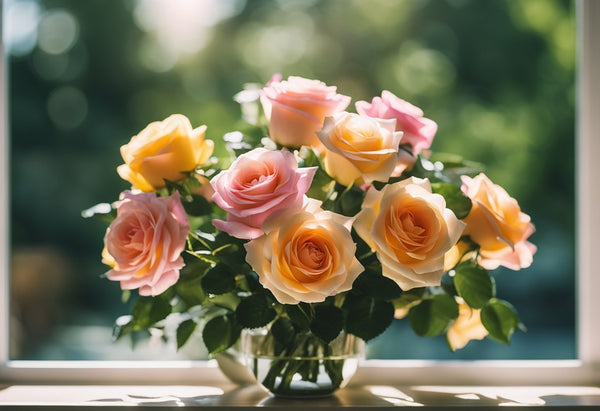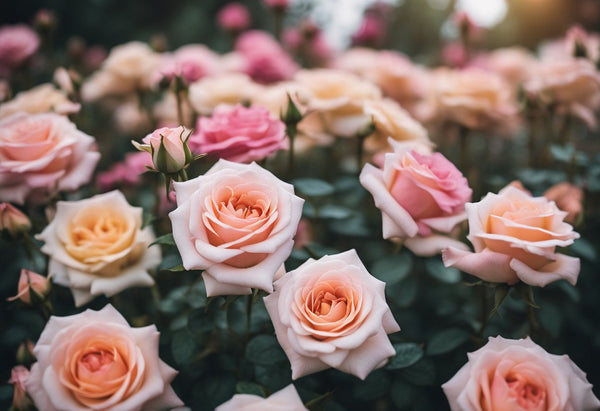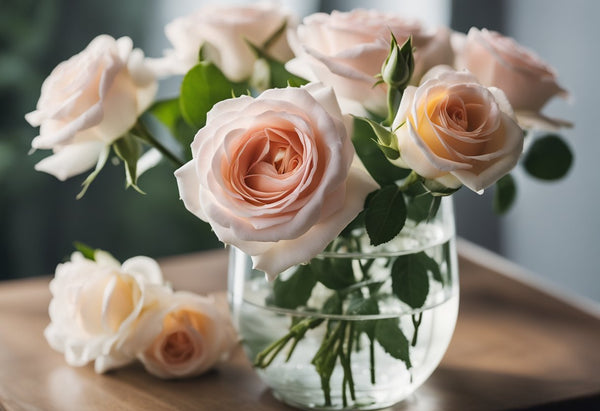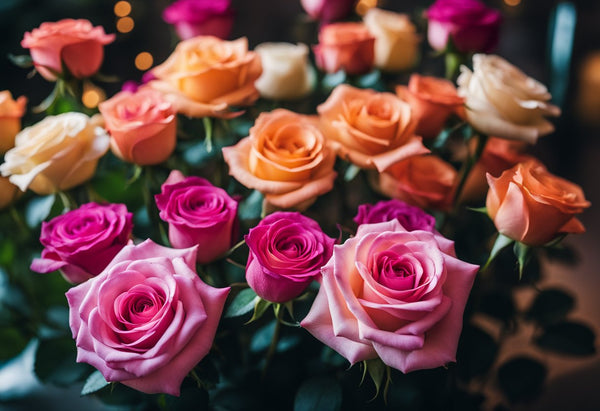Roses are a beautiful and popular flower, often used to express love, gratitude, and sympathy. However, their lifespan can be relatively short, leaving many gardeners frustrated and disappointed. Fortunately, there are several simple ways to extend the life of roses and enjoy their beauty for longer periods.

One way to extend the life of roses is to properly care for them from the moment they are planted. This includes selecting a suitable location with good soil drainage, providing adequate water and sunlight, and regularly fertilizing and pruning the plants. Additionally, it is important to choose disease-resistant varieties and to promptly remove any diseased or damaged stems or leaves.
Another way to prolong the life of roses is to take special care when harvesting and arranging them. This includes using sharp, clean pruning shears to make angled cuts just above a healthy leaf node, and placing the cut stems immediately in a bucket of water. When arranging roses, it is important to keep them away from direct sunlight, drafts, and heat sources, and to change the water in the vase every few days. The Meaning of Rose Colors is interesting to read.
Rose Care - Dos & Don'ts

Dos:
- Trim at 45-degree angel for optimal hydration
- Use Flower Food - Acts as nutrition to flower
- Prevent bacterial growth by removing foliage under waterline
- Change water every other day
- Use clean vase
Don'ts:
- Leave in Direct Sunlight
- Keep near ripening fruits
- Ignore care instructions
- Use old water
- Overcrowding vase with flowers
Selecting and Preparing Roses

Choosing the Right Roses
Selecting the right roses is crucial to ensure their longevity. When picking out roses, look for ones that have firm, unblemished petals and are free of any signs of damage or disease. It is also important to choose roses that are in the early stages of blooming, as they will last longer once cut.
Preparation of Cut Roses
Before cutting roses, make sure to have a clean and sharp pair of scissors or pruning shears. Using dull scissors can crush the stem and prevent the rose from absorbing water properly. It is also important to cut the stem at a 45-degree angle, which will allow for better water absorption and prevent the stem from sitting flat at the bottom of the vase.
Once the roses are cut, remove any leaves that will be below the water line in the vase. These leaves will decompose and create bacteria in the water, which can shorten the life of the rose.
Pruning and Removing Guard Petals
Pruning is an essential part of maintaining the health of roses. It is recommended to prune roses in the early spring, before new growth appears. This will promote healthy growth and help prevent disease.
When cutting roses, it is common to encounter guard petals, which are the outermost petals that protect the rose bud. These petals can be removed by gently pulling them away from the rose. Removing guard petals can help the rose fully open and prevent them from getting caught on each other, which can cause damage.
By following these simple steps, selecting and preparing roses can help extend their life and beauty.
Optimal Water and Vase Conditions

Water Quality and Additives
The quality of the water used to keep cut roses fresh is crucial. Ideally, the water should be clean and fresh, without any impurities or chemicals. Using filtered or distilled water is recommended, as tap water can contain chlorine, fluoride, and other chemicals that can damage the flowers.
In addition to using clean water, adding flower food can help extend the life of cut roses. Flower food contains a mixture of sugar, bleach, and citric acid that provides essential nutrients to the flowers and helps prevent bacterial growth. Alternatively, adding a teaspoon of sugar, a few drops of bleach, or a splash of vinegar to the water can also help keep the roses fresh.
Some people swear by adding aspirin or vodka to the water to prolong the life of cut roses, but there is little scientific evidence to support these claims. While aspirin contains salicylic acid, which can help prevent bacterial growth, it can also damage the flowers if used in too high a concentration. Vodka, on the other hand, is believed to have a preservative effect, but it can also dehydrate the flowers if used in large quantities.
Vase Cleaning and Preparation
Keeping the vase clean is just as important as using clean water. Bacteria and other microorganisms can grow in dirty vases, which can shorten the lifespan of cut roses. To clean the vase, first, rinse it with hot water to remove any debris or residue. Then, fill the vase with a mixture of water and bleach or vinegar and let it sit for a few hours. Rinse the vase thoroughly with hot water before using it to hold the roses.
Before placing the cut roses in the vase, make sure to trim the stems at a 45-degree angle to allow for better water absorption. Remove any leaves that will be submerged in the water, as they can rot and promote bacterial growth. Fill the vase with fresh, clean water and add flower food or other additives as desired. Place the vase in a cool, shaded area away from direct sunlight and heat sources, and change the water every two to three days to keep the roses fresh.
Proper Display and Maintenance

Location and Temperature Control
To extend the life of roses, it is important to properly display and maintain them. One of the key factors in maintaining the freshness of roses is controlling their location and temperature. Direct sun can quickly dry out roses, so it is important to keep them in a cool spot away from drafts and heat sources.
If displaying roses in a bouquet, it is best to keep them in a cool room with good air circulation. Avoid placing them near windows or vents, as temperature fluctuations can cause the roses to wilt. For longer-term storage, refrigeration can help extend their lifespan. It is important to keep the roses in a plastic bag to prevent dehydration.
Ongoing Care and Refreshing
In addition to proper location and temperature control, ongoing care is also important in extending the life of roses. To keep roses fresh, it is important to change the water in the vase every two to three days. This helps prevent the growth of bacteria, which can cause the roses to wilt.
Trimming the stems of the roses every few days can also help extend their lifespan. Cut the stems at an angle to allow for better water absorption. Removing any leaves that will be below the water line can also help prevent bacteria growth.
In summary, proper location and temperature control, along with ongoing care and refreshing, are key to extending the life of roses. By following these simple steps, you can enjoy your bouquet or individual roses for longer periods of time.
Understanding External Factors

Ethylene Gas and Fruit
Ethylene gas is a naturally occurring gas that is produced by fruits and vegetables as they ripen. This gas can be detrimental to the lifespan of fresh cut roses, as it can cause the petals to wilt and the blooms to fade prematurely. It is important to keep fresh cut roses away from any ripening fruits, especially apples, bananas, and pears, which produce high levels of ethylene gas.
To prevent exposure to ethylene gas, it is recommended to store fresh cut roses in a cool, dry place away from any fruits or vegetables. Additionally, it is important to change the vase water every other day to remove any bacteria that may have formed, which can also contribute to the production of ethylene gas.
Weather and Seasonal Effects
Weather and seasonal effects can also have a significant impact on the lifespan of roses. Extreme temperatures, both hot and cold, can cause the petals to wilt and the blooms to fade prematurely. It is important to keep fresh cut roses away from direct sunlight and drafts, as these can also cause the flowers to dry out.
The type of rose can also play a role in its longevity. Some varieties, such as hybrid teas and floribundas, are more delicate and may not last as long as hardier varieties like grandifloras and shrub roses. It is important to choose a variety that is well-suited to the climate and conditions in which it will be grown.
In summary, understanding external factors such as ethylene gas and weather conditions can help extend the life of roses. By taking proper care and precautions, it is possible to enjoy long-lasting blooms that will brighten up any space.
